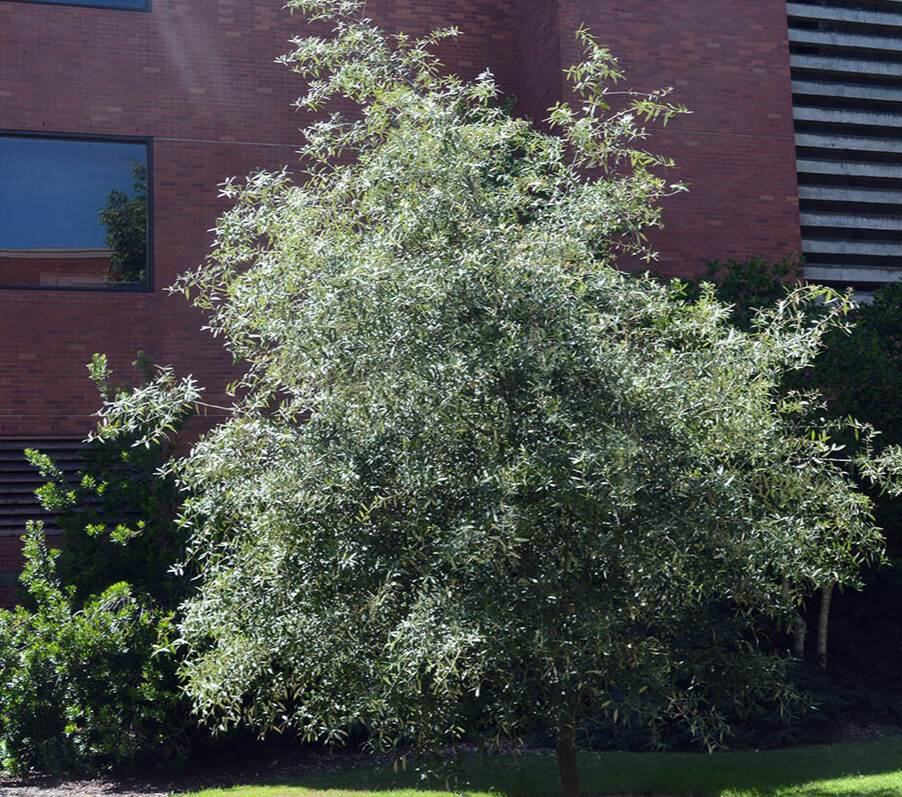
Quercus Hypoleucoides and Planting: A Comprehensive Guide
Introduction
In the realm of landscaping and gardening, selecting the right trees for your property is a crucial decision. Quercus Hypoleucoides, commonly known as the Silverleaf Oak, is a native tree species found in the southwestern United States and Mexico. Its distinctive silver-green foliage and adaptability make it a popular choice for landscaping. In this article, we will delve into the world of Quercus Hypoleucoides, exploring its characteristics, benefits, and the proper techniques for planting and caring for this magnificent tree.
Understanding Quercus Hypoleucoides
What is Quercus Hypoleucoides?
Quercus Hypoleucoides, also known as the Silverleaf Oak or Whiteleaf Oak, is a species of oak tree native to the southwestern regions of North America. Its scientific name, “Hypoleucoides,” translates to “white underneath,” which perfectly describes the silvery appearance of the tree’s leaves.
Unique Features
- Silver Foliage: The most striking feature of Quercus Hypoleucoides is its silver-green leaves, which shimmer in the sunlight, creating a stunning visual display.
- Drought Tolerance: This oak species is well-adapted to arid climates and can thrive in low-water conditions, making it an excellent choice for xeriscaping.
- Wildlife Attraction: Silverleaf Oak provides habitat and food for various wildlife, including birds and mammals, making it an ecologically valuable tree.
Benefits of Planting Quercus Hypoleucoides
Environmental Benefits
- Air Quality Improvement: The tree’s leaves help purify the air by absorbing pollutants and releasing oxygen.
- Shade and Cooling: Quercus Hypoleucoides provides ample shade, reducing the heat island effect in urban areas and lowering energy consumption for cooling.
Aesthetic Value
- Ornamental Beauty: Its unique foliage and graceful form add aesthetic appeal to any landscape.
- Year-Round Interest: Silverleaf Oaks are evergreen, ensuring your landscape remains vibrant even in the winter months.
Planting Quercus Hypoleucoides: Step-by-Step Guide
Choose the Right Location
Select a well-draining site with full to partial sunlight. Ensure there is enough space for the tree to grow to its full height and spread.
Soil Preparation
Prepare the soil by amending it with organic matter to improve fertility and drainage. Silverleaf Oaks thrive in slightly acidic to neutral soil.
Planting
- Dig a Hole: Dig a hole that is as deep as the root ball and twice as wide.
- Remove the Tree from its Container: Carefully remove the tree from its container, ensuring the roots are intact.
- Place the Tree: Position the tree in the center of the hole.
- Backfill: Fill the hole with soil, tamping it down gently as you go to eliminate air pockets.
- Watering: Water the tree thoroughly after planting to settle the soil and hydrate the roots.
Care and Maintenance
- Watering: Water the tree regularly, especially during the first few years after planting.
- Mulching: Apply a layer of mulch around the base of the tree to conserve moisture and suppress weeds.
- Pruning: Prune dead or damaged branches in late winter or early spring to maintain its shape.
Pest and Disease Management
Keep an eye out for common pests and diseases, such as oak wilt and aphids, and take appropriate measures for control.
Conclusion
Quercus Hypoleucoides, the Silverleaf Oak, is a remarkable tree that offers both environmental and aesthetic benefits. By following the proper planting and care guidelines, you can enjoy the beauty and advantages this tree brings to your landscape. Consider adding this native oak to your property and witness its transformation throughout the seasons.
FAQs (Frequently Asked Questions)
- How fast does Quercus Hypoleucoides grow?
Quercus Hypoleucoides typically grows at a moderate rate of around 12-24 inches per year. - Is Quercus Hypoleucoides susceptible to diseases?
While it can be susceptible to oak wilt and other diseases, proper care and maintenance can help minimize the risks. - Can I plant Quercus Hypoleucoides in a small garden?
Quercus Hypoleucoides can grow quite large, so it’s best suited for spacious landscapes or parks rather than small gardens. - When is the best time to plant Silverleaf Oak?
Fall or early spring is the ideal time for planting Quercus Hypoleucoides, as it allows the tree to establish its roots before hot summer temperatures arrive. - Do I need to fertilize my Silverleaf Oak tree?
Silverleaf Oaks typically don’t require frequent fertilization. However, if your soil lacks nutrients, you can apply a balanced fertilizer in the spring.